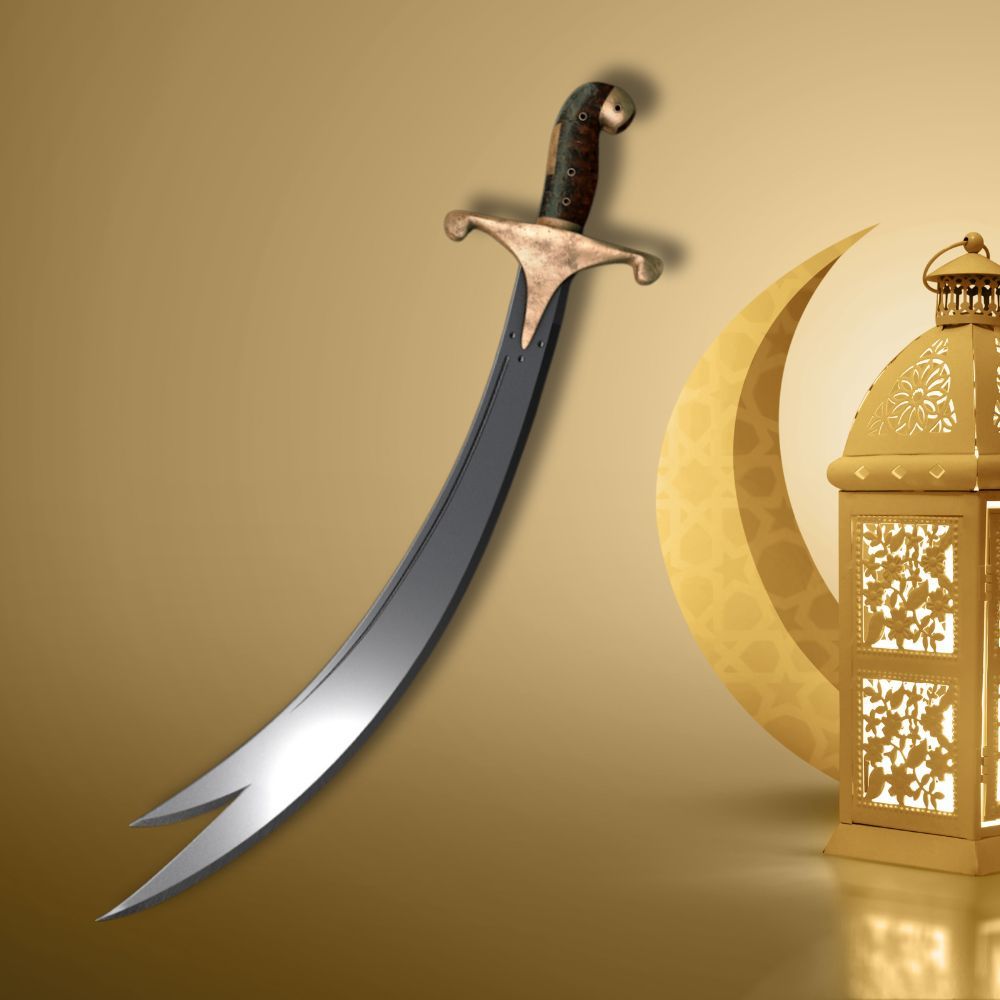What is the Zulfiqar Sword?
The Zulfiqar Sword is one of the most prominent and revered symbols in Islamic culture, especially associated with Imam Ali, the son-in-law of the Prophet Muhammad. This iconic sword is not only a historical artifact but also a spiritual emblem that represents values such as justice, courage, and divine protection. Over the centuries, the Zulfiqar has transcended its function as a weapon to become a central element in the iconography and faith of millions of people.

Origin and Meaning of the Name
The name Zulfiqar comes from the Arabic term "Thul-Fiqar", which translates as "divider" or "splitter." This name is intrinsically linked to its divine origin, as it is believed to have been given to the Prophet Muhammad by Allah during the Battle of Badr. One of its most distinctive features is its bifurcated design, with two sharp blades that symbolize the duality between good and evil, light and darkness. This unique design also reinforces its function as a powerful and symbolic weapon.
History and Legacy of the Zulfiqar
The sword is closely associated with Imam Ali, who received it as a gift from the Prophet Muhammad. According to tradition, Ali demonstrated his valor and combat skills during the Battle of Uhud, where he split in two the shield and helmet of the enemy's strongest warrior. Impressed by his courage, Muhammad gave him the Zulfiqar to replace his broken sword. This act not only solidified Ali's reputation as an exceptional warrior but also elevated the sword to a sacred status.
In addition to its historical importance, the Zulfiqar has been represented in various artistic and symbolic forms. During the Ottoman period, it was a frequent element on the flags of the Janissary cavalry, especially between the 16th and 17th centuries. In Shia iconography, the sword is commonly depicted as a double-edged scimitar, accompanying Imam Ali and reinforcing his role as the guardian of the faith.
Symbolism and Use in Islamic Culture
The Zulfiqar is much more than a tool of war; it is a symbol of protection, justice, and bravery. Its legend is so deeply rooted in Islamic culture that it has become a talisman of protection. One of the most famous inscriptions associated with the sword is:
لَا سَيْفَ إِلَّا ذُو ٱلْفَقَارِ وَلَا فَتَىٰ إِلَّا عَلِيٌّ
lā sayfa ʾillā ḏū l-faqāri wa-lā fatā ʾillā ʿalīy^un^
"There is no sword but the Zulfiqar, and there is no youth but Ali."
This phrase reinforces the connection between the sword and Imam Ali, highlighting his role as a spiritual leader and warrior. Furthermore, the Zulfiqar is used in religious ceremonies and protection rituals, where its power is invoked to safeguard believers.
Cultural Importance and Current Relevance
The Zulfiqar Sword plays a fundamental role in the cultural and religious identity of millions of Muslims around the world. It is not only a symbol of faith and devotion but also a reminder of the values it embodies: justice, courage, and divine protection. Its legacy transcends the religious sphere, influencing various cultural expressions, from literature to cinema and music.
In popular culture, the Zulfiqar has been represented in many works, establishing itself as an icon that combines the historical with the spiritual. Its unique design and rich history continue to inspire people to cultivate virtues such as bravery and the defense of justice in their own lives.
















